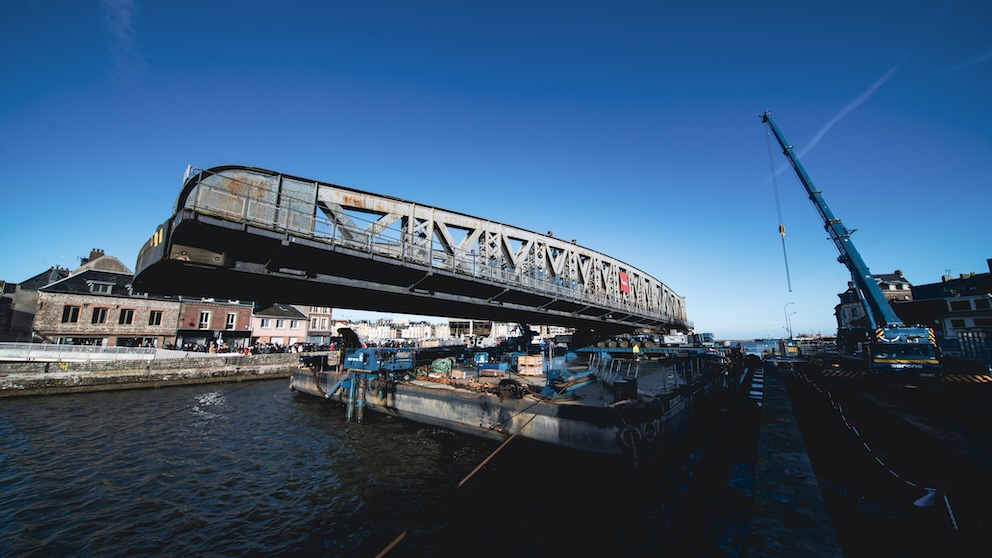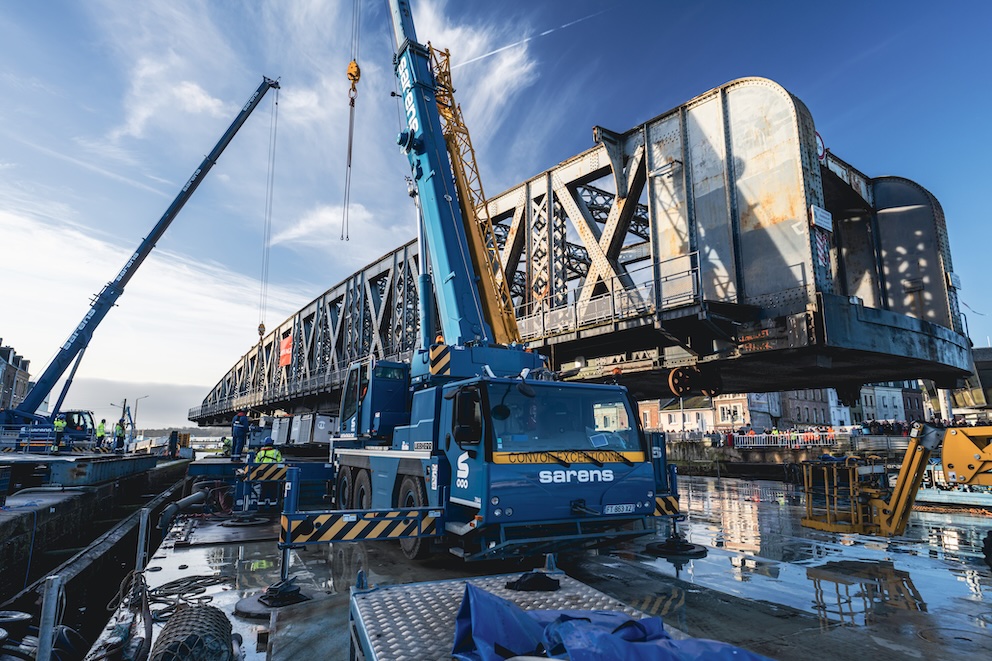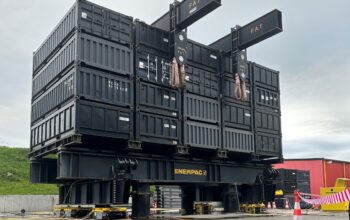Le pont Colbert de Dieppe, un des derniers ponts tournant d’Europe est en cours de restauration. Les équipes Sarens ont été mobilisées sur le démantèlement de cet ouvrage de 840 tonnes et 70 m de long.
Datant du 19e siècle, ce pont relie le port de Dieppe au centre-ville. Classé Monument historique, il fait actuellement l’objet d’une restauration et d’une rénovation complète en vue de son automatisation en 2025. 12 000 véhicules l’empruntent chaque jour et 1400 manoeuvres par an sont exécutées, permettant à 2300 navires d’entrer et de sortir du bassin commercial.
Son démantèlement a été confié à Eiffage Metal, qui a fait appel au groupe Sarens pour les opérations de levage et de transfert, des travaux sur une durée de 15 mois de travaux jusqu’à la réinstallation du pont, étape dans laquelle Sarens sera à nouveau impliqué.
Il s’agissait de déposer ce pont de 840 tonnes et 70 m de long sur une barge, qui a ensuite navigué jusqu’au port, où le pont été livré sur un autre quai, tourné à 180° et a traversé une route avant d’atteindre sur le site de restauration. Le pont a été soulevé d’environ 4 mètres de haut. Sarens a installé des supports et des rampes sous le pont pour les SPMT, indispensables pour charger le pont dans et hors de la barge.
Une mise en place complexe, difficile d’accès, dans un contexte contraint par la situation géographique du chantier, en plein centre-ville, alors que les camions et grues devaient circuler sans interrompre la circulation. Le niveau de l’eau a augmenté de 8 mètres en moins de 6 heures, ce qui a rendu l’opération très critique. De plus, le quai ne pouvant pas supporter le poids des SPMT, il a donc fallu installer une poutre de soutènement.
L’équipement comprenait 8 tours de jacking CS250, 4 SPMT de 8 lignes d’essieux, des supports et répartitions de charge, 12 ponts de 5800 mm et 2750 mm, 4 treuils hydrauliques et 24 pompes de ballast. La quasi totalité de l’équipement est arrivé de Wolvertem (Belgique) par camion, avec un total de 40 camions.
L’installation du matériel s’est déroulée en plusieurs phases : une semaine de préparatifs, deux semaines d’exécution et une autre semaine pour la démobilisation. Compte-tenu des marées, et donc des niveaux d’eau fluctuants, tous les calculs et préparatifs devaient être effectués pour une journée précise, sans marge d’erreur puisque cela aurait reporté l’opération de plusieurs semaines…












